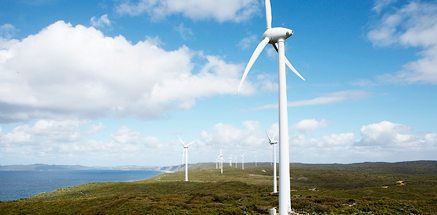A carbon price of between $50 and $100 per tonne would make Australia’s coal- and gas-fired electricity less economical than renewable electricity, according to a new study out of the University of New South Wales.
A peer-reviewed paper being published by a research group at the UNSW has found that, by increasing the carbon price to a ‘medium’ level, all fossil-fuelled power stations in Australia’s National Electricity Market could be phased out and replaced economically and reliably with commercially available renewable energy technologies.
To reach their conclusions, UNSW researchers Ben Elliston, Iain MacGill and Mark Diesendorf performed thousands of computer simulations using hourly data on electricity demand and matched this with hourly input from solar and wind power for the year 2010.
The simulations compared the optimal economics of a 100 per cent renewable electricity system with that of a hypothetical new replacement conventional system based on the more efficient coal and gas-fired power stations than are in use today in Australia. The researchers used the conservative technology costs projected to 2030 by the Bureau of Resources and Energy Economics.
“We found that the minimum 2030 costs of the reliable renewable energy system were achieved with a large contribution from wind power: from 46 to 59 per cent of annual electricity generation”, said PhD candidate and lead author, Ben Elliston.
“Solar photovoltaic and concentrated solar thermal electricity with thermal storage were equal second in their contributions to annual electricity generation, typically 15-20 per cent each. Existing hydro and gas turbines burning biofuels made small but vital contributions by filling gaps in wind and solar generation.”
Associate Professor Mark Diesendorf said the comparison of the renewable system with the so-called ‘efficient’ system of coal and gas-fired power stations was made to get a feeling for the relative costs involved, but added that any such fossil-fuelled system was “completely unacceptable” in terms of greenhouse gas emissions – producing only 19 per cent less emissions than Australia’s existing fossil-fuelled system.
Subsidies to the Australian fossil fuel industry – believed to be of the order of $10 billion per year across the entire industry – were also ignored in the study’s costings.
“Despite the fact that most of the electricity generation in our scenarios comes from the fluctuating sources wind and solar PV, the least-cost renewable energy systems as a whole were just as reliable as conventional systems,” Dr Diesendorf said.
“There is no need for any inflexible base-load power stations. We can balance fluctuating renewable energy sources with flexible power stations, such as hydro, gas turbines and concentrated solar thermal power with thermal storage.”









